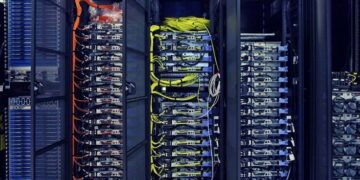A fiber laser metal cutting machine is one of the most advanced tools in modern metal fabrication. It is widely used in industries such as automotive, aerospace, electronics, construction, and heavy machinery due to its remarkable performance, accuracy, and energy efficiency. As the manufacturing world shifts toward high-speed, precision-based processes, fiber laser cutting has quickly become the preferred method over older technologies like CO₂ lasers and plasma cutters.
One of the most important advantages of a fiber laser metal cutting machine is its exceptional cutting speed and efficiency. Fiber lasers deliver laser light through fiber-optic cables, allowing the beam to be more focused and intense. This leads to much faster cutting speeds—especially for thin to medium-thickness metals—compared to CO₂ lasers or plasma machines. A fiber laser can cut materials like stainless steel and carbon steel at speeds that are two to three times faster than other cutting methods, significantly increasing productivity.
Another standout feature is cutting precision and quality. Fiber lasers produce a very narrow, high-density beam, resulting in clean, smooth edges and high-precision cuts. This makes them perfect for applications that require intricate shapes, fine details, or tight tolerances. Moreover, the precision of fiber lasers reduces the need for additional finishing processes, saving time and labor costs.
Versatility is a major strength of fiber laser cutting machines. They can efficiently cut a wide variety of metals, including stainless steel, mild steel, aluminum, brass, and copper. This is particularly valuable because fiber lasers handle reflective metals—like copper and brass—far better than CO₂ lasers, which often struggle with these materials. This opens up opportunities across many different industries with diverse material needs.
One of the most appreciated benefits is the low operational cost. Although the initial investment may be high, fiber laser machines have lower maintenance needs and operating costs over time. They don’t require mirrors or laser gases like CO₂ machines, and their solid-state design means fewer moving parts, resulting in less wear and tear. In addition, fiber lasers are far more energy-efficient, often consuming up to 70% less power than traditional laser systems.
Durability and lifespan also make fiber lasers attractive. The laser source can typically last over 100,000 hours, providing long-term reliability. The machines also require less frequent maintenance and experience less downtime, making them ideal for continuous industrial use.
Moreover, fiber laser machines are often equipped with advanced software and automation features, such as CNC controls, smart sensors, and real-time monitoring systems. These features allow operators to program complex cutting tasks, reduce human error, and maintain consistent quality during large-scale production.
Finally, environmental friendliness is becoming increasingly important. Fiber lasers operate cleanly, producing minimal waste and noise. Their high efficiency and lack of consumable gases contribute to a smaller carbon footprint compared to traditional methods.
In conclusion, a fiber laser metal cutting machine is a powerful, reliable, and cost-effective solution for today’s industrial manufacturing needs. Its high speed, precision, energy efficiency, and ability to cut a wide range of metals make it a superior choice over older technologies. As demand for smarter and faster production grows, fiber laser cutting continues to lead the way.




















